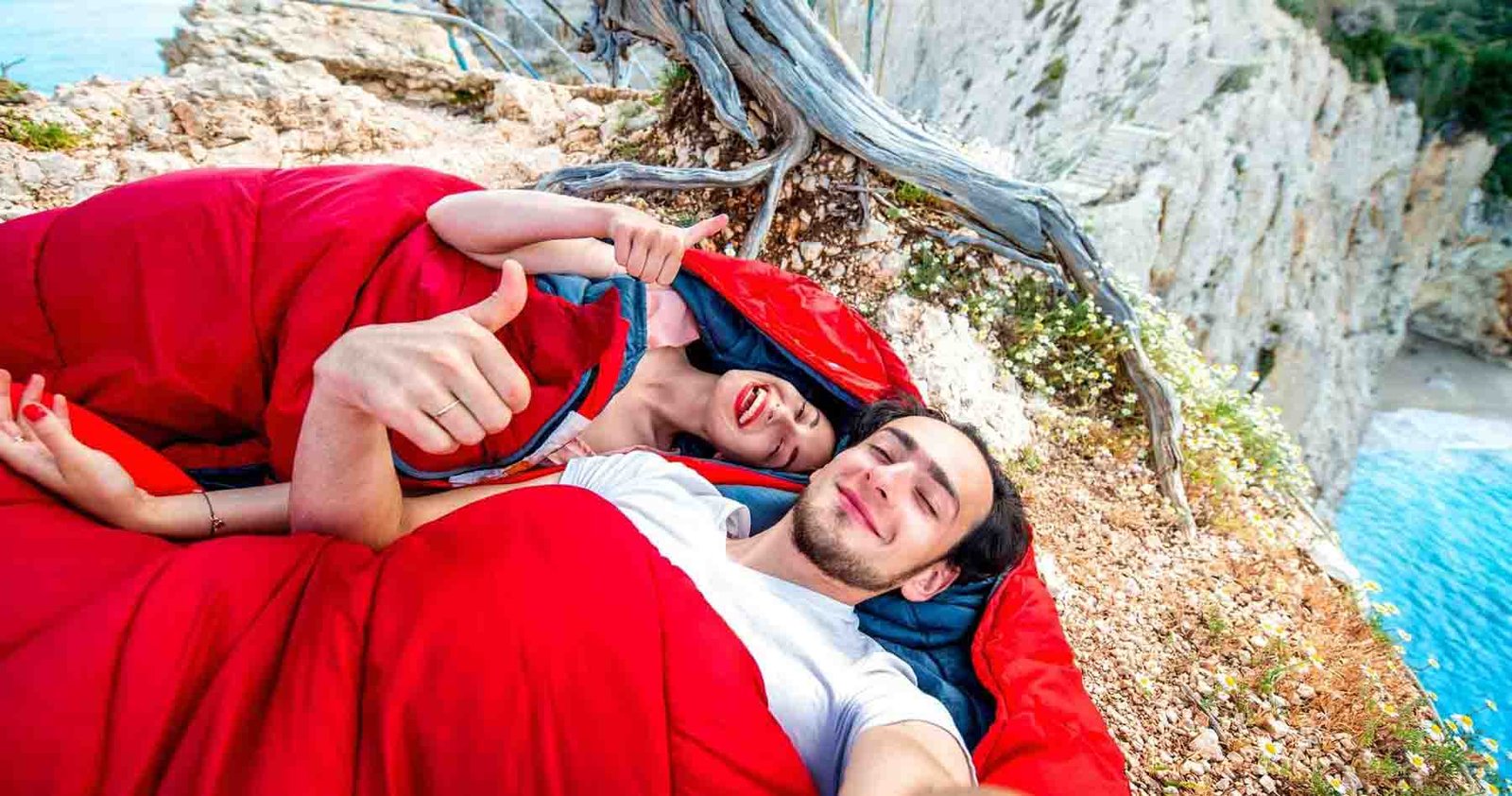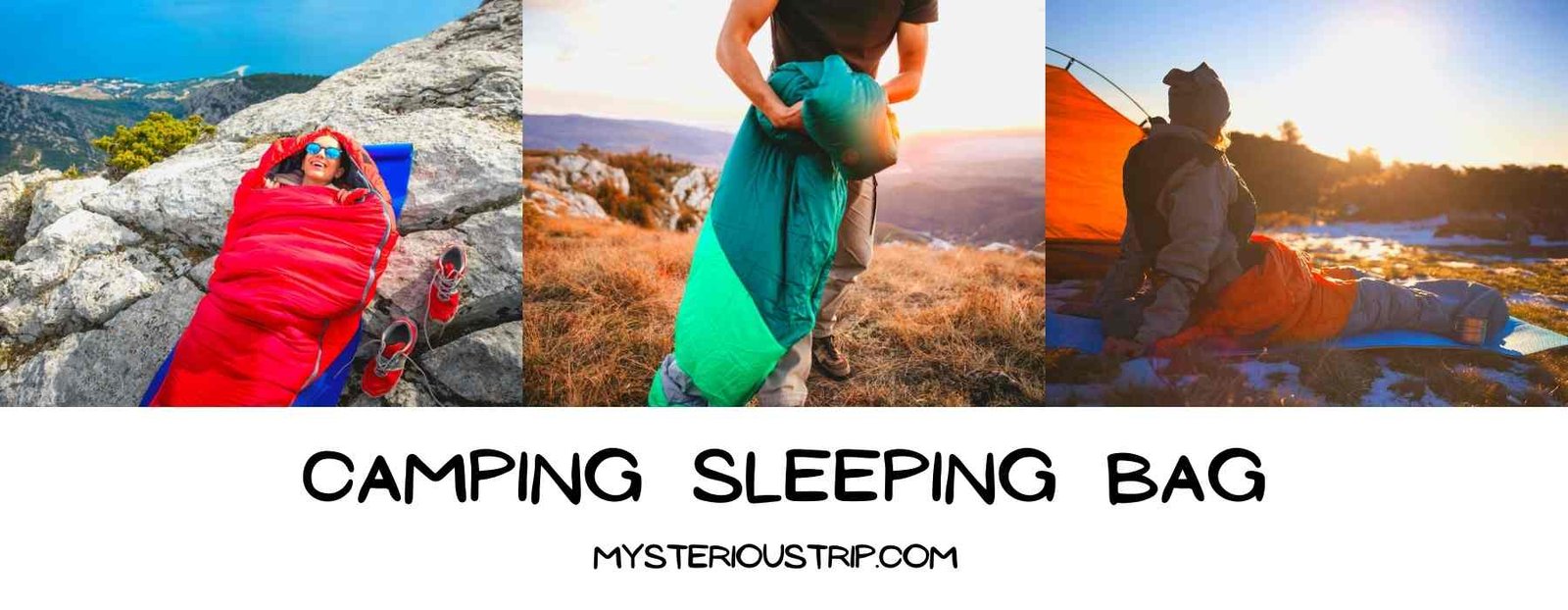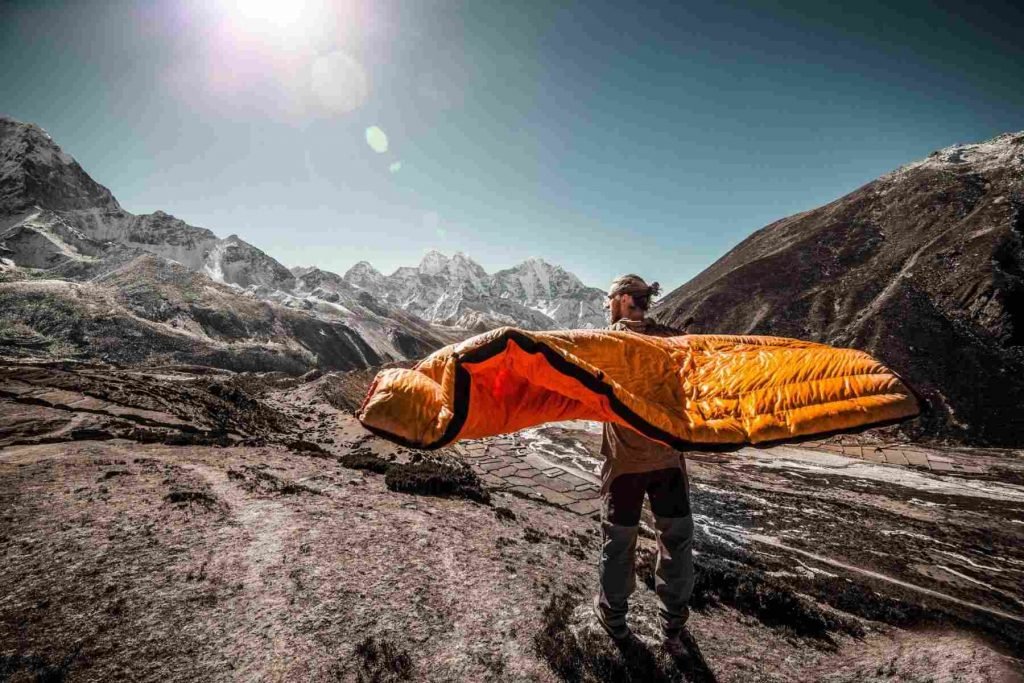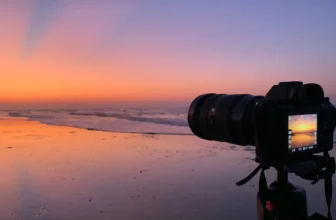
Whether camping or backpacking, your camping sleeping bag is one of the key things you need to take with you.
Whether it’s a solo or group camping trip, you have a bag; even it must be when you’re going solo camping.
No two sleeping bags are alike, with things like temperature ratings, shapes, insulation types, etc., all making some bags better than others.
And then there’s the fact that you need a different bag for different occasions and weather conditions, which further complicates things. The thing is, no one sleeping bag is going to do it all, but there are a few that come close.
Alas, we’re not here to tell you which one to buy, but rather give you a few pointers as to how you should go about choosing one and which are things to keep an eye out for.
Camping Sleeping Bag

Insulation Types – Down vs Synthetic
The kind of insulation will impact the performance, the weight, packing size, and, of course, the price. Both down-filled and synthetic have their advantages and disadvantages, so let’s take a look at both.
You can get perfect synthetic fill sleeping bags for a reasonable price, probably their main forte. They’re affordable, and something like the ones we mentioned earlier is an excellent performer in various situations.

Synthetic insulation also has another huge advantage: the performance in wet conditions. Unlike down insulation, when a synthetic fill sleeping bag gets wet, not only will it dry very fast, but it also won’t lose too much in terms of insulation properties.
This makes them perfect for sleeping in conditions where you might get some rain or where you have above-average humidity.
When it comes to the downsides, it’s the fact that a synthetic insulation sleeping bag can’t be packed too tight. But they’re still a great value choice and perform admirably in certain conditions.
Then you have down-filled sleeping bags, which are considered a bit more premium. These bags have one significant advantage – they’re incredibly lightweight and can be packed to a tiny size. To add to this, they’re very durable. Unlike synthetic bags, they retain their insulating performance for a few years.
However, they are not only more expensive, but if you get them wet, you’re in trouble. This is why most of them come with a water-resistant treatment, further increasing the price. But in some cases, even that won’t help.
We would suggest getting synthetic fill bags as your go-to solution, as they’re a bit more value-oriented and more versatile when it comes to using cases. If, however, you’re sure that you’ll only be camping in dry conditions, you could consider down insulation.
Consider the Temperature Ratings Camping Sleeping Bags
Not all Camping sleeping bags are made for all temperatures – you usually get summer bags, winter bags, as well as three-season bags that try to be a jack of all trades. But really, they’re perfect for seasons like spring or autumn.
When it comes to summer bags, they’re made for camping in temperatures above 30 degrees Fahrenheit. Anything below that, and you might be a tad bit cold. On the other hand, winter bags are made for camping when you have an external temperature below 15 degrees Fahrenheit and keep you warm even if it’s freezing outside. Anything in between can be covered with the three-season bags we mentioned.
Remember that it’s a good idea to have a bag that will keep you warm even if it’s colder than the coldest temperatures you expect on your trip.
You can unzip it if it feels too warm, and some of the temperatures will escape, leaving you comfortable. On the other hand, if your bag can’t get you warmed up, you’re potentially in trouble, which isn’t a good thing.
Also, keep in mind that camping sleeping bags and their temperature ratings are oriented towards an “average sleeper,” There’s a lot of variety to be considered. Things like your clothing can make a difference, your sleeping pad can make a difference, the wind and humidity outside can make a difference, and these are all things you should consider.
Pick the Right Shape

Any experienced camper’s first choice is a bag that gives them enough room to stretch in & possibly rollover in. The perfect shape for this is a rectangular design. You get plenty of room for both your legs and your arms. Some of them even come with a full zipper that allows you to use them as a comforter.
If you’d instead get a slightly more snug fit, you could consider a mummy bag. These are usually made for colder weather and lower weight as an added benefit. Note that you can’t roll over inside a mummy bag. Instead, you’ll need to do that with your bag. And we wouldn’t recommend them for warm weather.
There are also double sleeping bags, which are meant for couples. They’re pretty big and come in a rectangular shape with the size of two regular sleeping bags zipped together.
Which shape you go for is a personal preference – not something you can decide without trying. Not only should you consider how you use it, but you should also see what kind of sleeping bag fits your body type best, too.
Other Nice-to-have Extras
Aside from all the things we mentioned earlier, there’re a few things that you could get but aren’t a necessity. Only get them if you can afford a bag that has them. We’re talking about things like a bag shell that keeps your backpack dry, a hood to keep your head warm, or a stash pocket so you can have your essentials within arms’ reach – these will all make your camping experience a bit better.
Sleeping bag for Traveling
When you are traveling, it is important to have a comfortable place to sleep. A sleeping bag can provide you with the warmth and comfort that you need to get a good night’s sleep. However, not all sleeping bags are created equal. There are many factors to consider when choosing a sleeping bag, such as the temperature range, the weight, and the size.
The temperature range is one of the most important factors to consider when choosing a sleeping bag. You need to make sure that the bag you choose is rated for the lowest temperature that you will be sleeping in. Otherwise, you may end up being too cold during your trip.
The weight of the sleeping bag is another important factor to consider. If you are traveling in a backpack, you will want to choose a light sleeping bag. However, if you are car camping, you can afford to carry a heavier bag.
The size of the sleeping bag is also an important factor to consider. You need to make sure that the bag is big enough for you to be comfortable. Otherwise, you may end up being too cramped during your trip.






